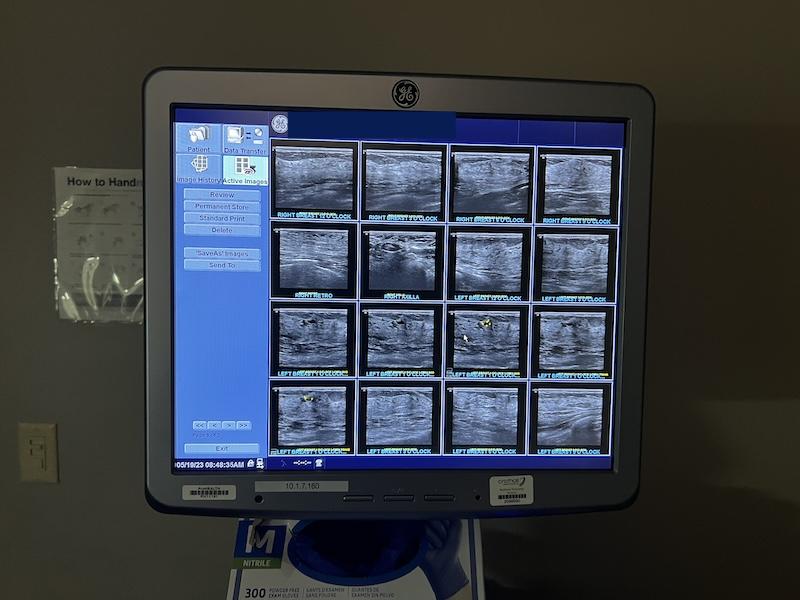As Breast Cancer Awareness Month rolls around, I want to take a moment to share my journey and raise awareness about a crucial aspect of breast health: dense breast tissue. Whether you’re like me, with no family history of breast cancer, or you have a higher risk, understanding the significance of dense breasts and how to navigate screenings is essential. In this blog post, we’ll explore what dense breast tissue is, why it matters, and the screening tests that women with dense breasts should consider.

My Personal Experience
I want to start by sharing my own experience. Despite not having a family history of breast cancer, I began having breast exams (sonograms) in my mid-20s due to having dense breasts. This year, at the age of 38, I had my first mammogram and sonogram. For those of us with dense breast tissue, it’s essential to start screenings early because it can be more challenging to detect breast cancer in dense breasts. After finding a small benign breast cyst in my left breast, I now need annual mammograms and ultrasounds.
Breastfeeding and Breast Cancer Risk Reduction
In addition to regular screenings, I chose to dense breasts both of my daughters for three years each. Research shows that breastfeeding can reduce the risk of developing breast cancer. For every 12 months of breastfeeding, there’s a 4.3% decrease in risk, in addition to a 7.0% decrease for each birth.

Understanding Dense Breast Tissue
What exactly is dense breast tissue? Our breasts comprise fibrous tissue, glandular tissue (responsible for milk production), and fatty tissue. Having dense breasts means there is more fibrous and glandular tissue and less fatty tissue. Importantly, dense breasts are normal and not a medical condition on their own, and they don’t cause symptoms. Surprisingly, you can’t determine breast density by touch alone, and firmer breasts don’t necessarily mean they’re dense. Dense breast tissue is only visible on a mammogram, where it appears white compared to the darker appearance of fatty tissue.
Why Knowing Your Breast Density Matters
Having dense breasts can pose a challenge when it comes to detecting breast cancer through mammograms. The increased density makes it more challenging to spot cancers, potentially increasing the risk of missed diagnoses. However, it’s crucial to understand that having dense breasts doesn’t necessarily mean you have a high risk of breast cancer. Other factors like age, family history, and past breast biopsies play a role in determining your overall risk.

Screening Tests for Women with Dense Breasts
Women with dense breasts should continue to receive regular screening mammograms. But there are additional tests that can help detect tumors that may be missed by conventional mammography or digital breast tomosynthesis (DBT):
- Breast Ultrasound (Whole-Breast Ultrasound): This test uses sound waves to produce images of breast tissues, offering another perspective beyond mammograms.
- Magnetic Resonance Imaging (MRI): MRI employs magnetic fields and radio waves to create detailed images of breast tissue. A contrast dye is injected to enhance image contrast and improve tumor detection.
During Breast Cancer Awareness Month, let’s remember that breast health is a journey we all share, regardless of our individual risk factors. Understanding your unique situation and staying up-to-date with the recommended screenings is key to early detection and prevention if you have dense breasts. Your breast health is worth it, and together, we can raise awareness and support one another in this essential endeavor.

